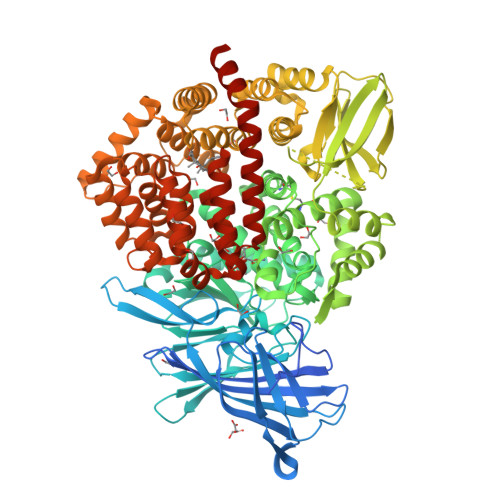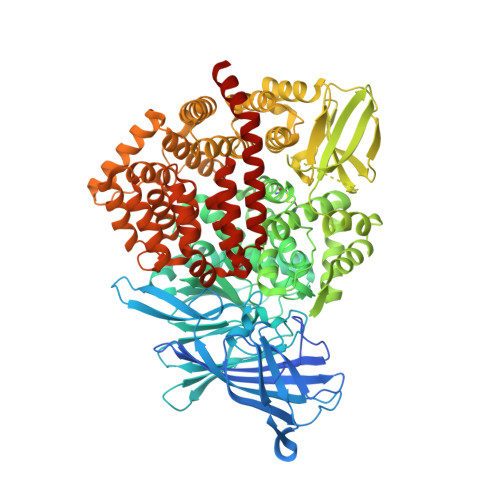Targeting the Regulatory Site of ER Aminopeptidase 1 Leads to the Discovery of a Natural Product Modulator of Antigen Presentation.
Liddle, J., Hutchinson, J.P., Kitchen, S., Rowland, P., Neu, M., Cecconie, T., Holmes, D.S., Jones, E., Korczynska, J., Koumantou, D., Lea, J.D., Nickels, L., Pemberton, M., Phillipou, A., Schneck, J.L., Sheehan, H., Tinworth, C.P., Uings, I., Wojno-Picon, J., Young, R.J., Stratikos, E.(2020) J Med Chem 63: 3348-3358
- PubMed: 32109056
- DOI: https://doi.org/10.1021/acs.jmedchem.9b02123
- Primary Citation of Related Structures:
6T6R - PubMed Abstract:
ER aminopeptidase 1 (ERAP1) is an intracellular enzyme that generates antigenic peptides and is an emerging target for cancer immunotherapy and the control of autoimmunity. ERAP1 inhibitors described previously target the active site and are limited in selectivity, minimizing their clinical potential. To address this, we targeted the regulatory site of ERAP1 using a high-throughput screen and discovered a small molecule hit that is highly selective for ERAP1. (4a R ,5 S ,6 R ,8 S ,8a R )-5-(2-(Furan-3-yl)ethyl)-8-hydroxy-5,6,8a-trimethyl-3,4,4a,5,6,7,8,8a-octahydronaphthalene-1-carboxylic acid is a natural product found in Dodonaea viscosa that constitutes a submicromolar, highly selective, and cell-active modulator of ERAP1. Although the compound activates hydrolysis of small model substrates, it is a competitive inhibitor for physiologically relevant longer peptides. Crystallographic analysis confirmed that the compound targets the regulatory site of the enzyme that normally binds the C-terminus of the peptide substrate. Our findings constitute a novel starting point for the development of selective ERAP1 modulators that have potential for further clinical development.
Organizational Affiliation:
Discovery Partnerships with Academia, GlaxoSmithKline, Stevenage, Hertfordshire SG1 2NY, U.K.






















